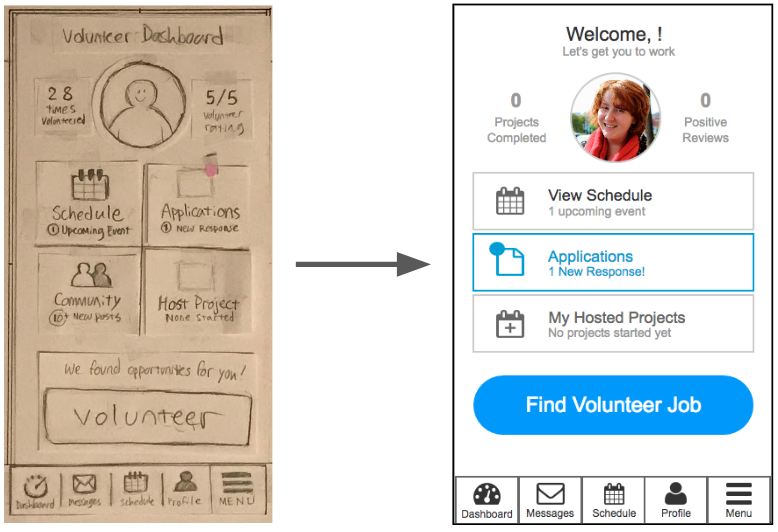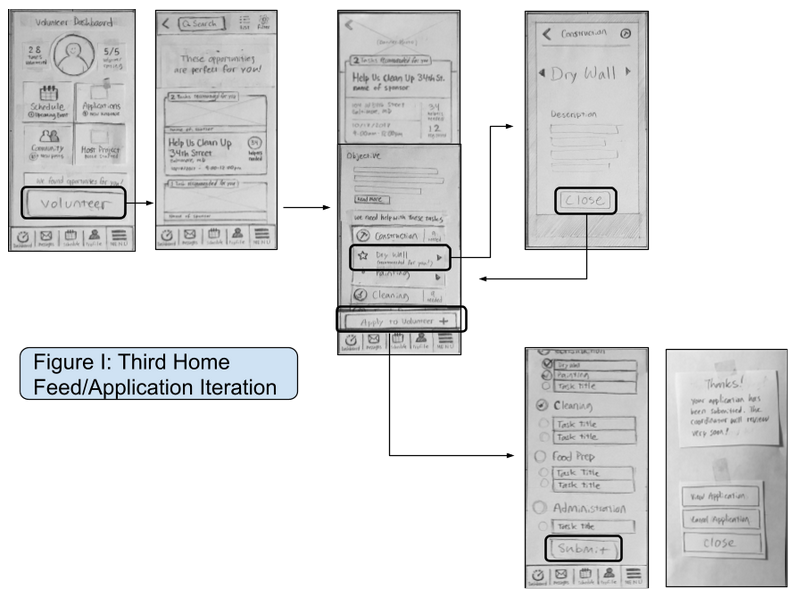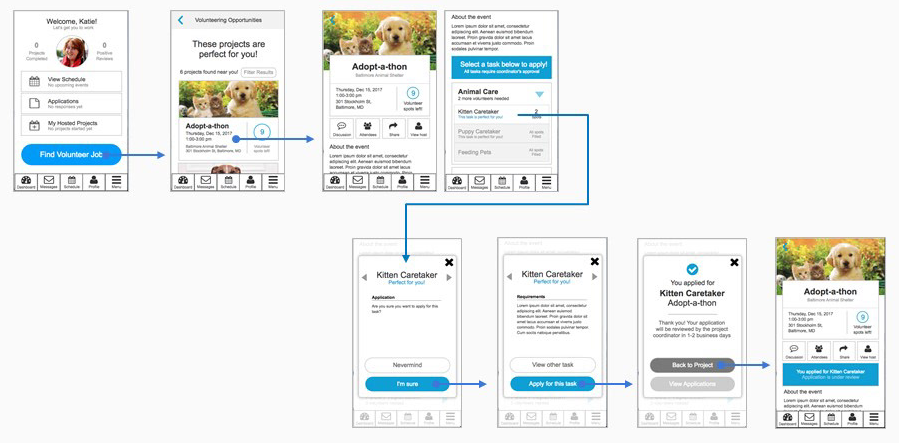App concept design
Prototyping an app meant for connecting organizers and volunteers
As part of the University of Baltimore’s Master’s program in Interaction Design and Information Architecture in the Fall of 2017, students were tasked with developing an app from scratch. The only stipulation about its function was that it had to “better humanity.” My team of three decided that it would be useful to have an app that could easily connect community organizers with potential volunteers.
As part of the development requirements, we began with a literature review, then peer reviewed our concepts with other students, created paper prototypes we used to perform usability tests, then finally turned our paper prototypes into functional prototypes using Axure.
tl;dr
Lit review and paper prototypes
As part of our research, we reviewed studies that theorized a few points: the biggest barrier to volunteerism is the time commitment and volunteers crave recognition for their good deeds. Using this knowledge, we set out to develop an app that could allow people to volunteer to perform specific tasks that fit their schedules and present it in an interface that highlights their accomplishments. With the primary goal of allowing volunteers to sign up for task-specific opportunities, we named our app Tasker.
Collaboration between designers could be challenging as most of the students (including myself) had full-time jobs, but using tools such as Axure and Google docs, we were able to do our design collaboration remotely.
Testing and iterating
Testing with paper prototypes allowed participants to think creatively and suggest large-scale changes. The lower the fidelity, the more participants understood this was not a final product. As a facilitator, I was able to make changes mid test to confirm that I understood the participant’s suggestion. The most important lesson learned was to test sooner. The team created paper prototypes for the entirety of the app, rather than starting with one feature. Feedback we captured during initial testing cascaded across several features that now had to be redrawn. If we had stuck with one feature, we could have incorporated our findings into new paper prototypes. After six rounds of testing, the team iterated on its design until we were ready to create functional prototypes within Axure and perform another round of testing.
In the end we had a that accomplished our initial vision while reflecting the invaluable insights of our test participants we couldn’t have expected.
The documentation of our research and design process is available for review.



